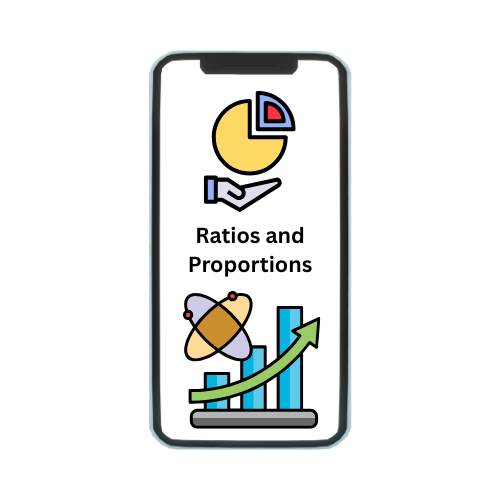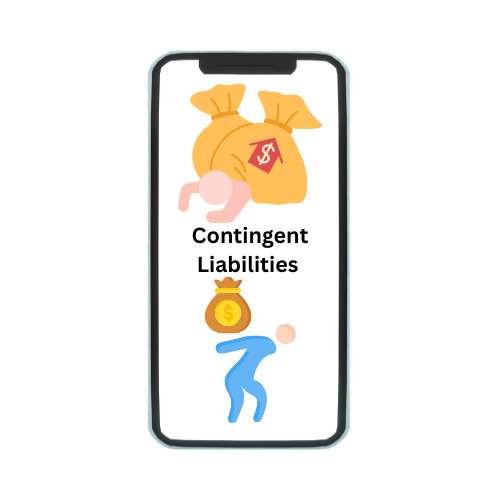An interest rate swap is a financial derivative contract where two parties agree to exchange interest rate payments on a specified principal amount over a set period. Typically, one party pays a fixed interest rate, while the other pays a floating interest rate that fluctuates based on a reference rate, such as LIBOR or SOFR. These swaps are used primarily for hedging against interest rate risk or for speculative purposes. For instance, a company might enter into an interest rate swap to convert a variable-rate loan into a fixed-rate loan to stabilize its future cash flows. Conversely, an investor might use a swap to bet on future interest rate movements. The fixed-rate payer benefits if interest rates rise, while the floating-rate payer gains if rates fall. By engaging in an interest rate swap, entities can align their financial strategies with their expectations of future interest rate trends, manage risks, or achieve more favorable financing terms.
What Is An Interest Rate Swap (IRS)?
An Interest Rate Swap (IRS) is a financial agreement between two parties to exchange interest rate payments on a predetermined principal amount over a specified period. This agreement typically involves one party paying a fixed interest rate, while the other party pays a variable, or floating, interest rate that is tied to a benchmark index such as LIBOR (London Interbank Offered Rate) or SOFR (Secured Overnight Financing Rate). The primary purpose of an IRS is to manage exposure to fluctuations in interest rates and align financial strategies with market conditions. For example, a corporation might enter into an IRS to convert a floating-rate loan into a fixed-rate loan, thereby stabilizing its interest expenses if it anticipates rising interest rates. Conversely, a financial institution might use an IRS to capitalize on expected declines in interest rates by swapping a fixed rate for a floating one. The cash flows exchanged between the parties are based on the notional principal amount, which is not actually exchanged. This swap allows participants to hedge risk, adjust their interest rate exposure, or achieve better financing terms based on their expectations of future interest rates. Interest Rate Swaps are a key tool in the financial markets for managing risk and optimizing investment strategies.
Common Terminology in Interest Rate Swaps
- Notional Principal: The hypothetical amount on which interest payments are based, though it isn’t exchanged.
- Fixed Rate: The interest rate that remains constant for the duration of the swap.
- Floating Rate: An interest rate that changes over time, often linked to a reference rate like LIBOR.
- Swap Date: The date on which interest payments are exchanged.
Types Of Interest Rate Swaps
Interest rate swaps come in various forms, each designed to meet different financial objectives and risk management needs. The most common types include vanilla swaps, basis swaps, inflation swaps, and amortizing swaps.
Vanilla Swaps
The most straightforward form of interest rate swap is the vanilla swap, where one party exchanges a fixed interest rate for a floating rate based on a benchmark index. The fixed-rate payer makes payments calculated as a fixed percentage of the notional amount, while the floating-rate payer’s payments fluctuate based on the index rate. This type of swap is ideal for entities seeking to hedge against interest rate fluctuations or lock in predictable payment amounts.
Basis Swaps
Basis swaps involve the exchange of two floating interest rates based on different benchmarks. For example, one party might pay a LIBOR-based rate while receiving a SOFR-based rate. These swaps are used to capitalize on differences between various floating rates and manage exposure to changes in interest rate spreads.
Inflation Swaps
In an inflation swap, one party pays a fixed interest rate while receiving payments tied to an inflation index, such as the Consumer Price Index (CPI). This type of swap helps investors or institutions hedge against inflation risk or adjust investment returns based on expected inflation trends.
Amortizing Swaps
Amortizing swaps feature a notional principal amount that decreases over time according to a predetermined schedule. The payments exchanged between parties reflect this reducing notional amount, making this swap useful for loans or investments where the principal balance changes over time.
How Interest Rate Swaps Work
Interest rate swaps are sophisticated financial instruments designed to help parties manage interest rate exposure through the exchange of cash flows based on different interest rate structures. At the core of an interest rate swap is a contractual agreement between two parties: one party agrees to pay a fixed interest rate, while the other pays a floating interest rate that varies with market conditions. Here’s a step-by-step breakdown of how these swaps function:
- Agreement and Terms: The two parties agree on the terms of the swap, including the notional principal amount (which is used for calculating interest payments but is not actually exchanged), the fixed and floating interest rates, the frequency of payments (monthly, quarterly, semi-annually, etc.), and the duration of the swap.
- Fixed vs. Floating Rates: One party commits to paying a fixed interest rate on the notional amount for the life of the swap, providing predictable payment obligations. In return, the other party agrees to pay a floating interest rate, which fluctuates based on a benchmark such as LIBOR, SOFR, or another reference rate.
- Payment Exchange: At each payment date, the two parties exchange interest payments based on their agreed rates. The fixed-rate payer calculates their payment as a percentage of the notional amount, while the floating-rate payer’s payment is calculated using the current floating rate applied to the same notional amount. The net payment is the difference between the two calculated amounts.
- Cash Flows: Only the difference between the fixed and floating rate payments is exchanged, meaning that the net cash flow represents the gain or loss for each party based on interest rate movements. For example, if the fixed rate is 4% and the floating rate is 3%, the fixed-rate payer will pay the floating-rate payer the difference, which is 1% of the notional amount.
- Maturity: At the end of the swap’s term, the final interest payments are exchanged, and the contract is concluded. Throughout the swap’s life, the parties monitor market conditions to manage their exposure to interest rate changes and adjust their strategies as needed.
Advantages Of Interest Rate Swaps
Interest rate swaps offer a range of strategic benefits for both corporations and financial institutions. Here are some key advantages:
- Hedging Against Interest Rate Risk
Interest rate swaps are a powerful tool for hedging against interest rate fluctuations. By swapping a variable interest rate for a fixed one, companies can lock in predictable payments and stabilize their financial planning. For instance, a company with a variable-rate loan might use a swap to secure fixed payments, thus avoiding the uncertainty of fluctuating interest rates and managing future cash flows more effectively.
- Cost Management and Optimization
Swaps can help organizations optimize their financing costs. If a company can access lower interest rates through a fixed-rate loan compared to a variable-rate loan or vice versa, an interest rate swap can align the loan terms with market conditions. For example, if a company believes interest rates will rise, it might use a swap to convert a variable rate to a fixed rate, potentially saving money in the long term.
- Flexibility in Financial Strategies
Interest rate swaps offer significant flexibility in financial management. Parties can customize the terms of the swap agreement, including the notional amount, payment frequencies, and the interest rates. This flexibility allows entities to tailor swaps to their specific financial needs, such as adjusting the duration of the swap or choosing between different types of interest rate structures.
- Improved Balance Sheet Management
Swaps can be used to manage balance sheet risks by adjusting the interest rate profile of assets and liabilities. For example, financial institutions might use swaps to balance the interest rate sensitivity of their assets and liabilities, thereby improving their overall balance sheet stability and financial health.
- Access to Better Financing Terms
By leveraging the market’s view of future interest rates, interest rate swaps can provide access to better financing terms. For instance, companies might use swaps to convert existing debt from a less favorable interest rate structure to a more beneficial one, potentially reducing the overall cost of borrowing or taking advantage of anticipated interest rate movements.
Market Participants In Interest Rate Swaps
Interest rate swaps involve a diverse range of market participants, each playing a distinct role in the swap market. Understanding these participants and their functions provides insight into how interest rate swaps operate and the dynamics of the financial markets. Here’s a detailed overview of the key market participants:
- Corporations
Corporations are often end-users of interest rate swaps for managing their interest rate exposure and optimizing their financing costs. For example, a company with a variable-rate loan might enter into a swap to exchange its variable rate for a fixed rate to stabilize its future interest payments. Corporations use swaps to hedge against interest rate risk, manage cash flows, and align their financial strategies with market conditions.
- Financial Institutions
Banks and other financial institutions are major players in the interest rate swap market. They act as intermediaries, facilitating swaps between different parties. Financial institutions may also enter into swaps to hedge their own interest rate risks, manage their balance sheets, and meet regulatory requirements. Banks often offer swap products to their clients, providing the necessary services for executing and managing swap contracts.
- Investment Funds
Investment funds, including mutual funds, hedge funds, and pension funds, use interest rate swaps to manage interest rate exposure, speculate on rate movements, or enhance returns. For instance, a hedge fund might enter into an interest rate swap to profit from anticipated changes in interest rates, while a pension fund might use swaps to match the duration of its liabilities with its assets.
- Central Banks
Central banks participate in the interest rate swap market to implement monetary policy and manage financial stability. They might engage in swaps to influence interest rates, provide liquidity to the financial system, or intervene in the foreign exchange markets. Central banks’ involvement helps stabilize the financial system and achieve macroeconomic objectives.
- Government Agencies
Government agencies are involved in interest rate swaps to manage public debt and optimize government financing strategies. Agencies might use swaps to convert fixed-rate debt to floating rates to take advantage of lower short-term interest rates or to restructure existing debt. These swaps help agencies achieve cost-effective financing solutions for public projects.
Interest Rate Swaps Impact On Financial Markets And The Economy
Interest rate swaps play a significant role in both financial markets and the broader economy, influencing various aspects of financial stability, economic growth, and risk management. Here’s a detailed look at how interest rate swaps impact financial markets and the economy:
- Stabilizing Interest Rates and Financial Stability
Interest rate swaps help stabilize interest rates in the financial markets. By allowing institutions and corporations to lock in fixed rates or adjust their exposure to floating rates, swaps mitigate the effects of volatile interest rate movements. For example, during periods of rising interest rates, companies can use swaps to convert variable-rate debt into fixed-rate debt, stabilizing their borrowing costs and contributing to overall financial stability.
- Facilitating Risk Management
Interest rate swaps are essential tools for managing interest rate risk. They enable market participants to hedge against fluctuations in interest rates, which can affect investment returns, loan costs, and financial planning. By providing mechanisms to manage this risk, swaps support more predictable financial outcomes for businesses and investors, helping them navigate economic uncertainty and plan for the future.
- Enhancing Market Liquidity
Interest rate swaps contribute to market liquidity by creating opportunities for trading and exchanging interest rate exposures. Market participants, including banks, investment funds, and corporations, engage in swaps to meet their financial needs and optimize their portfolios. This trading activity ensures a continuous flow of capital and investment, which is crucial for efficient financial markets.
- Influencing Monetary Policy
Interest rate swaps can impact monetary policy by affecting the transmission of interest rate changes through the economy. Central banks use swaps to manage liquidity, influence short-term interest rates, and implement monetary policy measures. For instance, central banks may conduct interest rate swaps to adjust the money supply or stabilize financial markets during economic downturns.
- Shaping Investment Strategies
Investment funds and traders use interest rate swaps to shape their investment strategies and pursue speculative opportunities. By taking positions based on expectations of future interest rate movements, they can seek to profit from changes in interest rates. This speculative activity adds depth to the financial markets but also introduces risks that can affect market stability.
Risks Associated With Interest Rate Swaps
Interest rate swaps, while valuable financial instruments for managing interest rate exposure, come with several inherent risks that can impact both market participants and the broader financial system. Understanding these risks is crucial for effectively using and managing interest rate swaps. Here’s a detailed exploration of the key risks associated with interest rate swaps:
- Credit Risk (Counterparty Risk)
Credit risk, also known as counterparty risk, arises from the possibility that one party in the swap agreement may fail to meet their payment obligations. This risk is particularly significant in over-the-counter (OTC) swaps, where the parties directly enter into agreements without a central clearinghouse. If one party defaults, the other party might face losses from missed payments or the costs of replacing the swap at current market rates. For example, if a company’s counterparty defaults, it may need to enter a new swap agreement at less favorable terms, potentially leading to financial losses.
- Market Risk
Market risk refers to the potential for losses due to fluctuations in market conditions, such as changes in interest rates. Interest rate swaps are sensitive to changes in interest rates, and the value of the swap can rise or fall based on movements in the fixed and floating rates. For instance, if a company has entered into a swap to receive a floating rate and pay a fixed rate, a decrease in interest rates could result in lower floating payments but higher fixed payments, leading to a financial loss.
- Liquidity Risk
Liquidity risk is the risk that a market participant might not be able to enter or exit swap positions without significantly affecting the price. This can be an issue in less liquid swap markets or for highly customized swaps. For example, if a company wants to terminate a swap agreement early, it might face challenges finding a counterparty willing to take the opposite position at a reasonable price, potentially resulting in a significant cost.
- Operational Risk
Operational risk encompasses the risk of losses due to failures in internal processes, systems, or controls related to managing interest rate swaps. This includes errors in trade execution, incorrect calculation of payments, or failures in monitoring and reporting. For instance, a bank might incur losses if there are inaccuracies in calculating swap payments or delays in processing trades, which could affect the overall management of interest rate risks.
- Legal Risk
Legal risk involves the possibility of losses resulting from legal disputes or issues arising from the swap contract. This can include challenges related to the interpretation of contract terms, disputes over performance obligations, or regulatory non-compliance. For example, if there is a disagreement over the terms of the swap or a breach of contract, legal proceedings could lead to financial losses or penalties.
Conclusion
Interest rate swaps are essential financial instruments that play a crucial role in the management of interest rate risk, the optimization of financing costs, and the stabilization of financial markets. Through these swaps, market participants—ranging from corporations and investment funds to banks and government agencies—can hedge against interest rate fluctuations, achieve more favorable financing terms, and align their financial strategies with evolving market conditions. However, while interest rate swaps offer significant advantages, they also come with a spectrum of risks including credit risk, market risk, liquidity risk, and operational risk, which can impact both individual institutions and the broader financial system. Effective management of these risks is vital for harnessing the benefits of swaps without exposing oneself to potential downsides. The impact of interest rate swaps extends beyond mere financial transactions; they influence monetary policy, affect economic growth, and contribute to the development of innovative financial products. In essence, while interest rate swaps provide powerful tools for financial management and strategic planning, they require a nuanced understanding of their mechanisms, benefits, and risks. By balancing these factors, market participants can leverage swaps to enhance financial stability, drive economic growth, and navigate complex financial landscapes. As the financial environment continues to evolve, the role of interest rate swaps will remain pivotal in shaping both market practices and economic outcomes.








